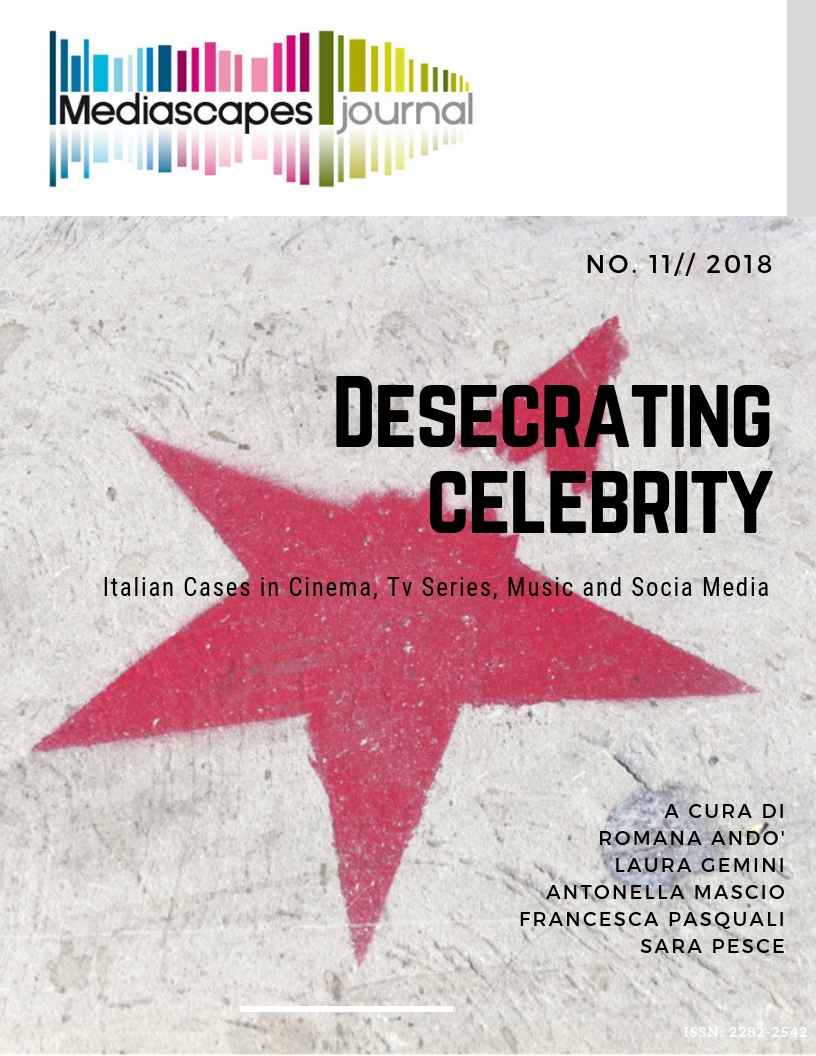The Pope-celebrity and the role of cinema
Abstract
Cinema, in particular the auteur one, often offers a dense and sometimes visionary reflection on the processes of constitution and medial recognition of celebrities, some religious figures included, helping us to understand the depth of these phenomena also in relation to the different moments of history and of media development. The essay proposes a first exploration of this vast topic focusing on the analysis, conducted with semiotic instruments, of two texts considered prime examples in this sense, linked through the theme of the relation between worldliness and religion, as well by the direct connection of inspiration between the two directors. We refer to the historical sequence "The Princess Domitilla" from Roma (1972) by Federico Fellini and to the television series The Young Pope by Paolo Sorrentino (2016). In the first one, the link between sacralization and desacration is widely and provocatively explored, through the hyper-Baroque imaginary of an Ecclesiastical fashion show occurred in the heart of the Roman "Black nobility". Fellini already in the Dolce Vita (1960) staged the role of the media – especially the gutter press and the beginnings of television – in the construction of mass "fanaticism" phenomena, both worldly and religious. In the TV series created and directed by Paolo Sorrentino, The Young Pope, on the other hand, the question of the Pope as celebrity is explicitly addressed and theorized at different levels, starting with the choice of the lead actor, Jude Law, who emphasizes this theme.
##submission.downloads##
Pubblicato
Come citare
Fascicolo
Sezione
Licenza
Gli autori che pubblicano su questa rivista accettano le seguenti condizioni:
- Gli autori mantengono i diritti sulla loro opera e cedono alla rivista il diritto di prima pubblicazione dell'opera, contemporaneamente licenziata sotto una Licenza Creative Commons - Attribuzione che permette ad altri di condividere l'opera indicando la paternità intellettuale e la prima pubblicazione su questa rivista.
- Gli autori possono aderire ad altri accordi di licenza non esclusiva per la distribuzione della versione dell'opera pubblicata (es. depositarla in un archivio istituzionale o pubblicarla in una monografia), a patto di indicare che la prima pubblicazione è avvenuta su questa rivista.
- Gli autori possono diffondere la loro opera online (es. in repository istituzionali o nel loro sito web) prima e durante il processo di submission, poiché può portare a scambi produttivi e aumentare le citazioni dell'opera pubblicata (Vedi The Effect of Open Access).


